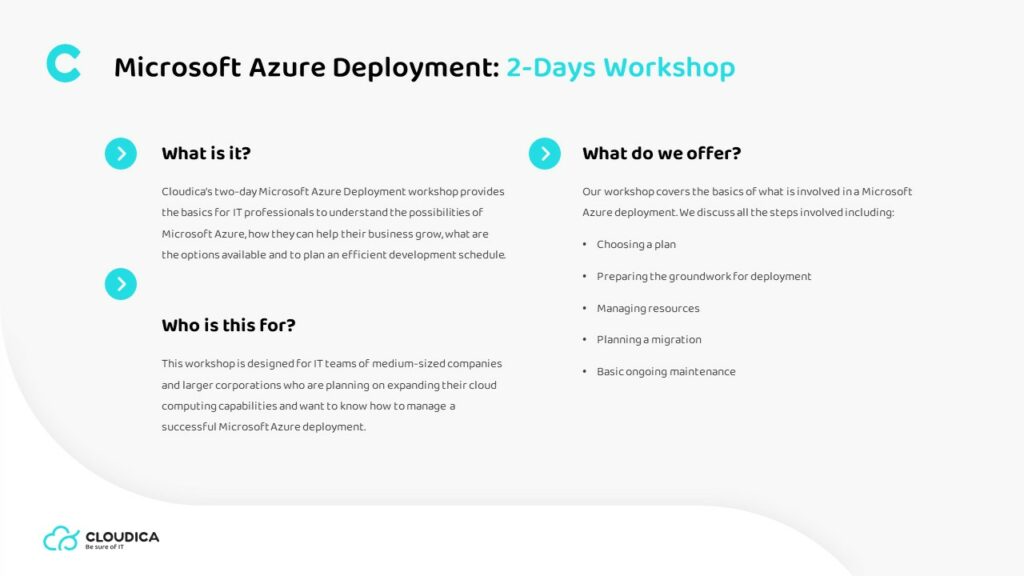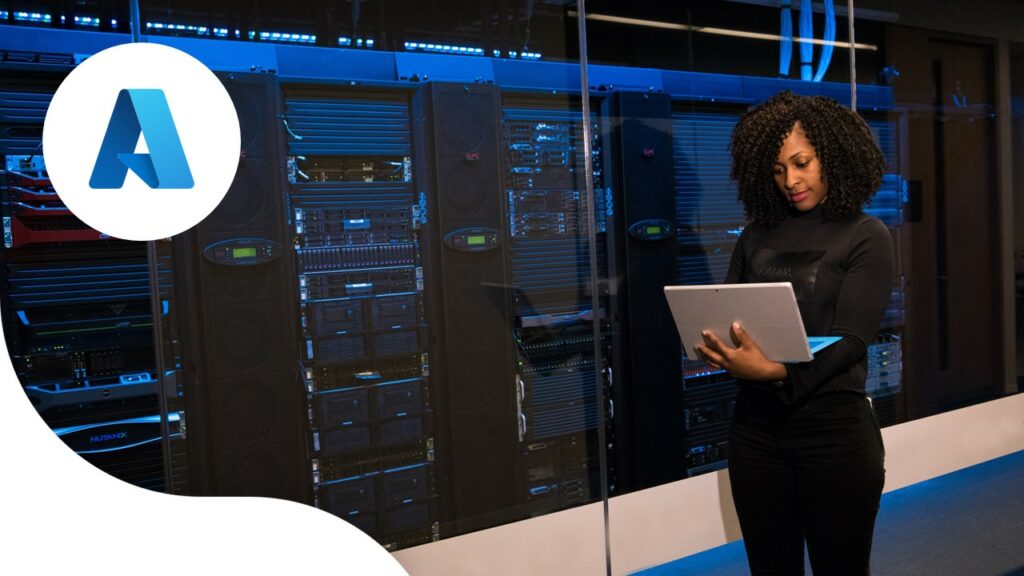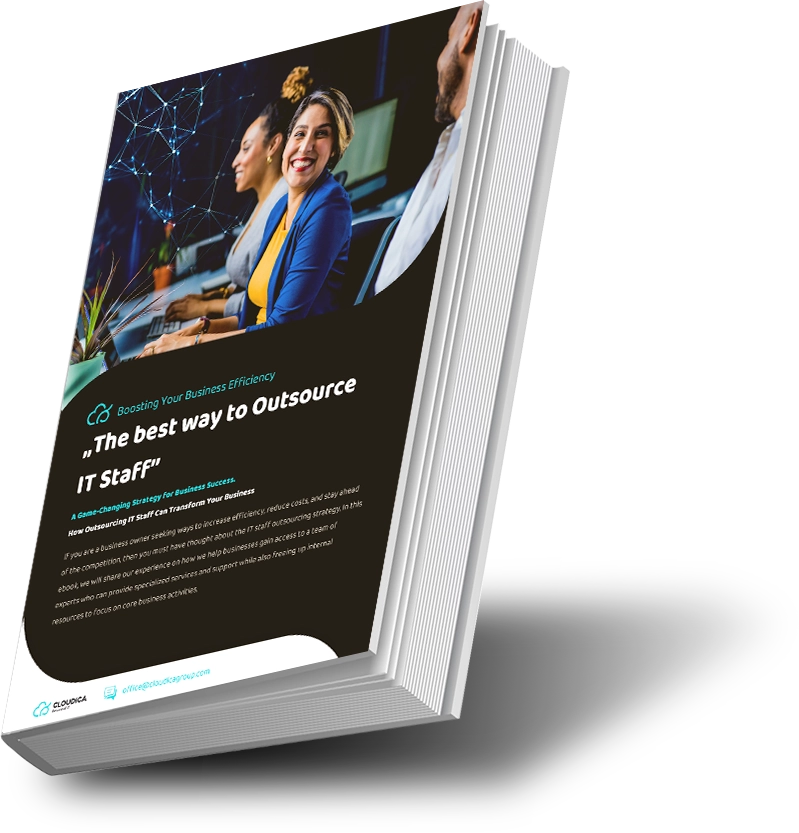2-Days Workshop
Microsoft Azure Deployment
What is it?
Cloudica’s two-day Microsoft Azure Deployment workshop provides the basics for IT professionals to understand the possibilities of Microsoft Azure, how they can help their business grow, what are the options available and to plan an efficient development schedule.
What is for?
This workshop is designed for IT teams of medium-sized companies and larger corporations who are planning on expanding their cloud computing capabilities and want to know how to manage a successful Microsoft Azure deployment.
What do we offer?
Our workshop covers the basics of what is involved in a Microsoft Azure deployment. We discuss all the steps involved including:
• Choosing a plan
• Preparing the groundwork for deployment
• Managing resources
• Planning a migration
• Basic ongoing maintenance
What are the benefits?
• Managing Azure Resources and Subscriptions
• Putting in Place and Managing Storage
• Managing and Deploying VMs
• Setting Up and Taking Care of Virtual Networks
• Identity management using Azure Active Directory
Steps and agenda
• A deep dive on the Microsoft Azure available subscriptions
• A presentation on the hidden side of Azure, learn the trick and tips of what is possible
• A plan outline on the client’s needs and how different options can help the business grow
• A presentation on the basics of how to maintain the Microsoft Azure environment
• Q&A session
Most popular offerings
Contact
Ready to meet the only technology partner you'll ever need?









